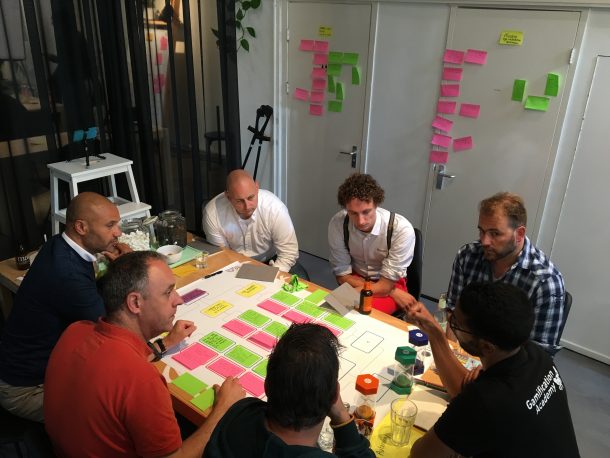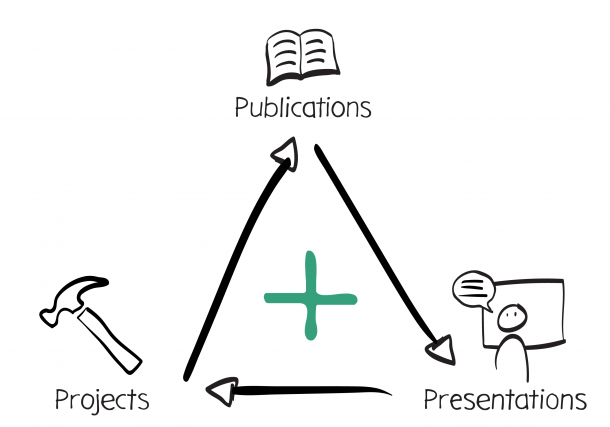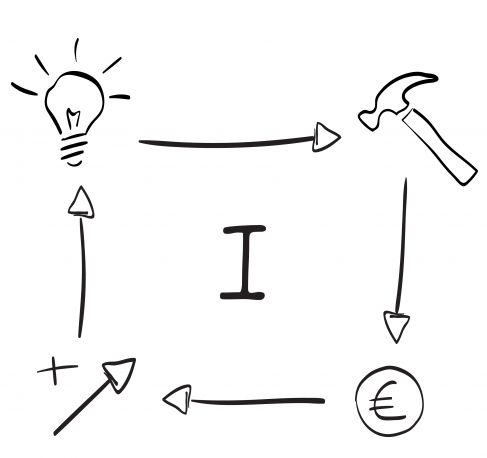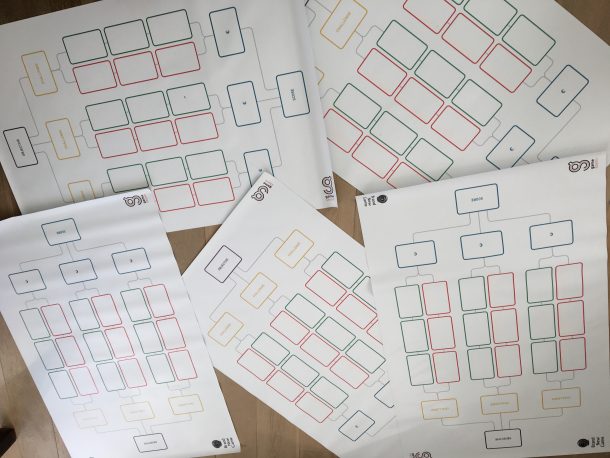During a GameStorm session in 2017 the objective for the session was inspired by the book ‘Bold‘ – which I can highly recommend. The objective that we defined was: “How can organizations create exponential growth?” This is a description of what came out of the session:
The challenges that the team defined for there organization were:
- The purpose of our organization is not inspiring (recognizable?)
- Lack of focus (no vision, mission or inspiring purpose)
- Ill use of the time we have (meetings, chatting, e-mailing)

The actions that were chosen that most likely keep challenge 1 in place were:
- Write down a very broad purpose statement with lots of business lingo
- We would rather execute work for clients than bother writing down our purpose
- Let one department, management (or even one director) write down the purpose statement
The actions that were chosen to overcome the challenge 1 (the purpose is not inspiring), were:
- Make your purpose statement visual or create an inspiring movie
- We will organize a day during which we will define the purpose together with the whole team
- We organize a ‘thank-you’ event each quarter to celebrate succes, the bigger our succes – the bigger the event will be.
The destructive actions that were chosen that most likely keep challenge 2 in place (Lack of focus), were:
- Say yes to each new request or opportunity
- Create a project team for each new idea
- Assign teams to a different project, half-way the project they were working on
The constructive actions that were chosen to overcome the challenge 2, were:
- We aim all actions towards the same purpose and manage departments on why & what should be achieved, not how.
- I give people time and budget to do training to develop skills they expect to need to achieve the set objective (purpose)
- I help the team to celebrate and visualize both their efforts and results on a Kanban-board and review the actions each day
The actions that were chosen that most likely keep challenge 3 in place (Ill use of the time we have), were:
- Doing other people’s work, because it has to be done
- Appreciating and rewarding people that participate in more than 20 (!) projects
- We start every week with ‘leaning up’ followed by a daily scrum, a week-meeting and a specialist-session…
The actions that were chosen to overcome the challenge 3, were:
- We will give people time and budget to do a time management training (2nd time)
- We reduce the work-week to 32 hours (and pay 40) and note the actions that I stop executing.
- We will start to observe and measure which tasks are repetitive and will automate or outsource them

Three of the actions mentioned regarded development or training or employees or reducing ‘work-hours’. Personally I take about 30% of my time to read and write publications and do presentations about what I read or wrote. Forcing myself to read what’s new, innovative or just interesting keeps my mind open to new ways of looking at things. Sharing this knowledge with others gives me both a sense or purpose and fulfillment. And apart from that, presenting the information in my own way enables me to actually ‘master’ what I read or wrote. What inspires me most is reading books or watching documentaries outside of my business (branding / organizational change and gamification). I strongly encourage organizations to facilitate employees in developing new skills, interests and explore usage of their talents in different areas of their business. Why not rotate people from time to time through different departments surrounding different purposes. Let them join meetings they usually would not be in and ask for their non-biased opinion. We can sometimes solve problems faster using actions that lie outside of the area that created those problems. You could rotate people according to the four progressive processes I defined in my latest book; think, make, sell and improve.

As for the reduction of working-time… I plan to work 24/7 from now on; meaning 24 hours per week. In practice this means I leave my house AFTER traffic to drive to work, so I am in the office around 10 o’ clock and leave again around 16:00 hours BEFORE traffic. Effectively I work 6 hours in the office and I do the necessary phone calls in the car. I should mention that I indeed use those 6 hours to focus only on the things that are in my agenda. And I plan and execute like a German (diligently).
On Friday I don’t work, it’s my dad-day. I understand not all companies and jobs can work like this, unless you rotate tasks and occasionally the CEO should pick up the phone or answer some complaints… To my opinion that should be the job of the CEO anyway – collecting feedback to improve the organization as a whole based on a shared vision and purpose using the key-competences and talents of all members.
Posted in Bart Hufen, GameStorm, Gamification, Uncategorized | Comments Off on Which actions generate exponential growth
